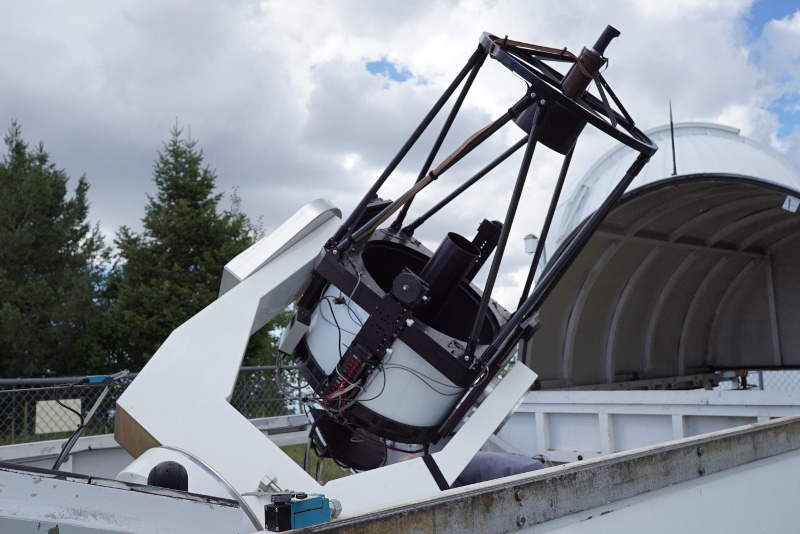

Our 0.6-meter Ritchie-Chretien telescope on Mt. Lemmon is operated remotely and semi-autonomously on most clear nights. Its high quality Zerodur optical system yields images which are limited only by site seeing, while its massive fork mounting provides stable continuous tracking for the SBIG STX-16803 camera with its 16 mega-pixel CCD sensor. An Optec IFW-3 filter wheel system allows selection from Sloan filters, color imaging filters, and narrow band filters for hydrogen-alpha and ionized oxygen imaging of nebulae through interchangeable 6-filter wheels. The tracking system uses off-axis guiding with an Optec Sagitta pick-off prism and an SBIG ST-I guider camera that is poistioned around the field by an image rotator for guide star selection.
The telescope was Manufactured by RC Optical Systems in 2007, and was at Mark Manner's SPOT observatory near Nashville, Tennessee, before being moved to Mt. Lemmon in 2014. While in Tennessee, the telescope made many significant contributions to the KELT exoplanet survey that grew in its new location at the high alitude Mt. Lemmon site. It was donated to the University of Louisville in 2016 and is currently used to contribute precision photometry to the NASA TESS follow-up program in search of transiting exoplanets. Data from this telescope are among the highest photometric quality of any for ground-based rapid transient events such as exoplanet transit measurements, at times better than 1 thousandth of a magnitude RMS over a duration of hours.
Shared Skies is a collaboration of the University of Louisville and the University of Southern Queensland, Australia, providing remote and robotic astronomical instrumentation for time-sensitive precision photometry, especially in support of exoplanet search followup and rapid response to stellar transients. The observatories are used for graduate and undergraduate student research, and for undergraduate and distance-online astronomy education in the United States and in Australia.
